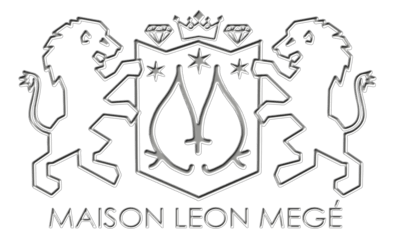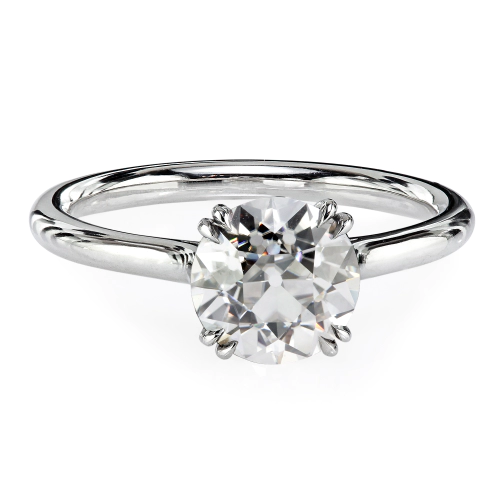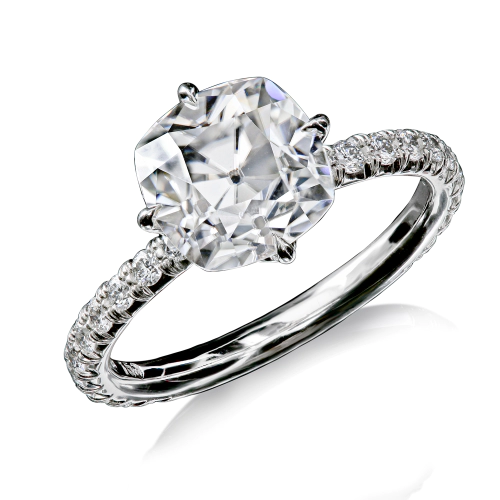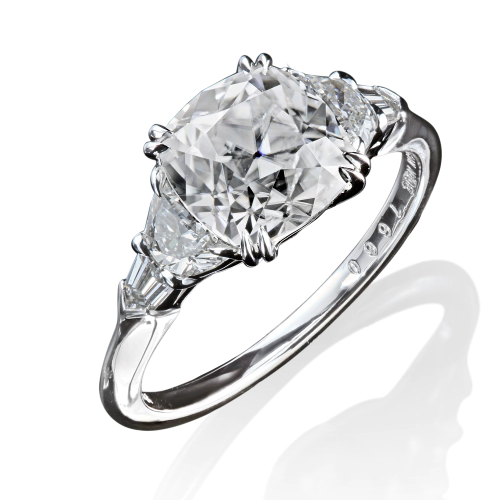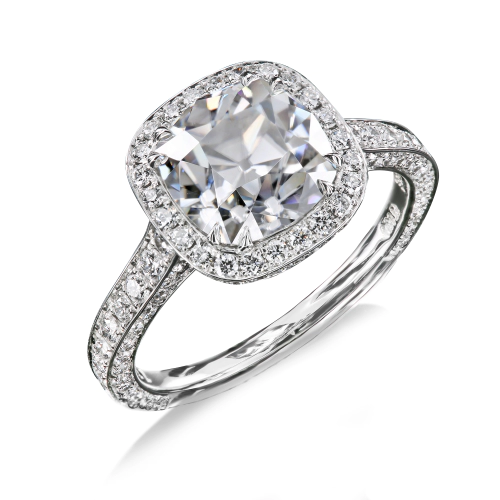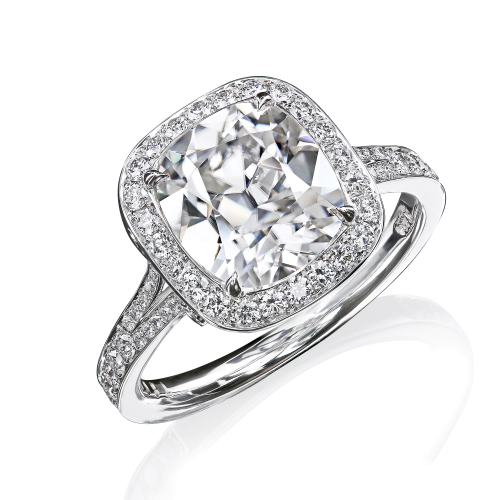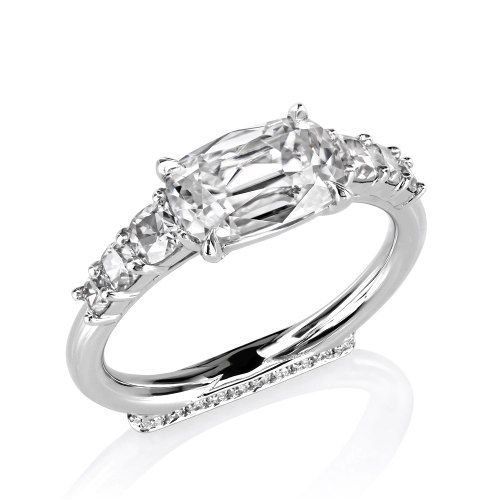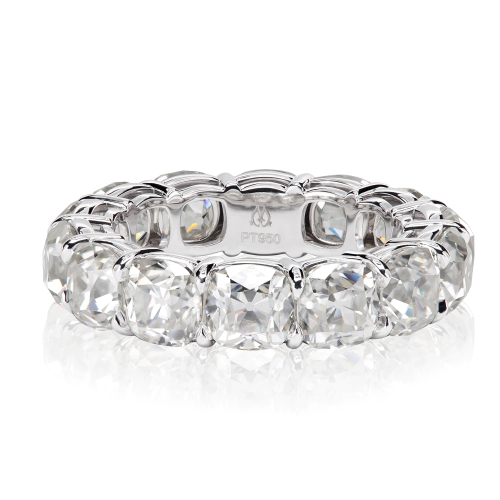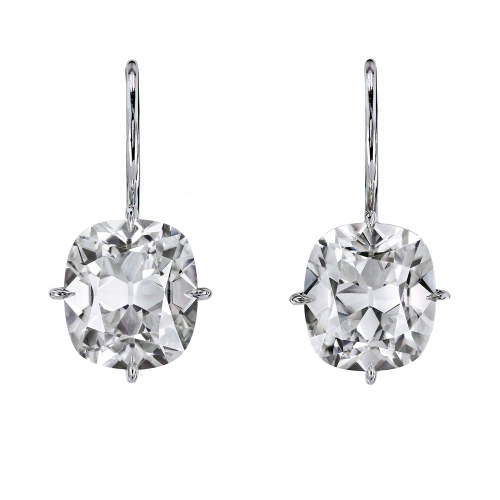- Imaginary Diamonds
- Blonde Moissanite
- Lab-grown Diamonds
A simulant will save a fortune , but not a face
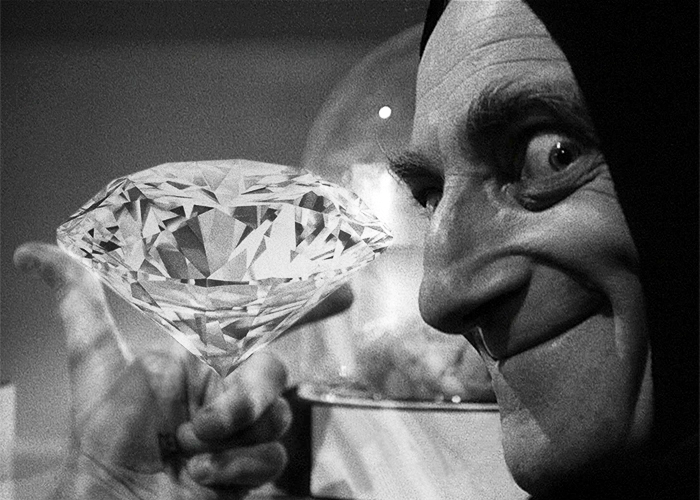
Diamonds are the stone of choice for engagement rings because they are colorless and durable. They can be worn daily without getting chipped, scratched, or dull (if kept clean). The same reason why engagement rings are usually made with white metal -platinum or white gold. A colorless ring is easy to color-coordinate and can be worn year-round with any outfit and for any occasion, formal or casual. Because of that, there are only a few options to replace a diamond in an engagement ring.
Simulants vs. Substitutes
Simulants or imitation diamonds, faux diamonds, fake diamonds, etc., are synthetic gemstones resembling diamonds such as Moissanite and CZs. Unlike lab-grown diamonds, simulants have vastly different chemical compositions and physical and optical properties. Simulants were used to trick people in the past, but they are now simply stand-ins for natural diamonds. With lab-grown diamond prices dropping fast, their value practically evaporated.
Diamond substitutes are natural gemstones – Spinels, Topazes, Sapphires, and Zircons that look different and cannot be mistaken for diamonds. Their use in engagement rings is a personal choice.
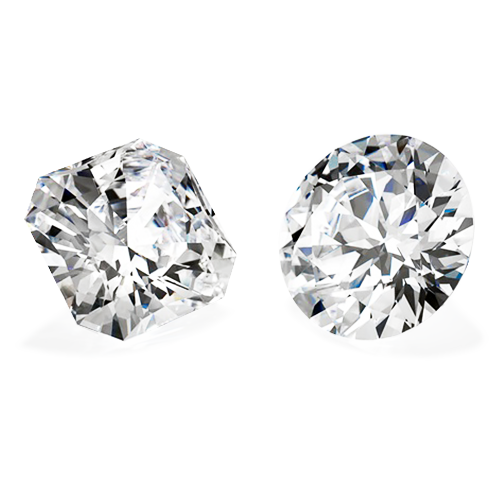
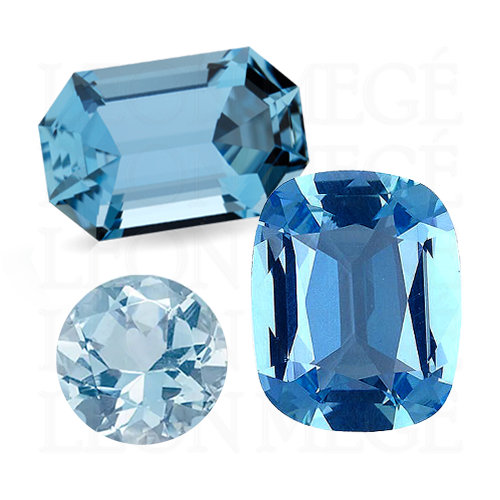
Aquamarine
Aquamarine’s color is typically lighter than a sapphire’s deep blue but warmer than a spinel’s cold and steely tone. Its color is very calming and subdued, similar to the tone of a fancy blue diamond. Aquamarine is a moderately priced, widely available, well-known gemstone associated with a good marriage.
Aquamarine’s cool blue color is neutral, radiating a sense of calm and relaxation. That’s why Facebook, Linkedin, and Twitter all have blue logos. Aquamarine is a variety of beryl with exceptional luster and clarity and is high on the list of diamond alternatives. It has a rich history predating the Roman Empire, highly prized for thousands of years.
Spinel
Spinel is a natural gemstone in various colors ranging from red, orange, pink, purple, and lavender to black. Light-blue or light-grey spinels are popular in engagement rings due to their excellent hardness and magnificent fire. Its girdle can be left exposed without worrying about getting chipped. Spinel works well in three-stone engagement rings and solitaires. Precious red spinels have long been mistaken for rubies. Recently spinel was added as August’s second birthstone.
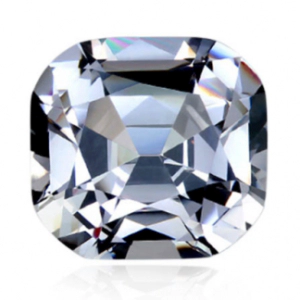
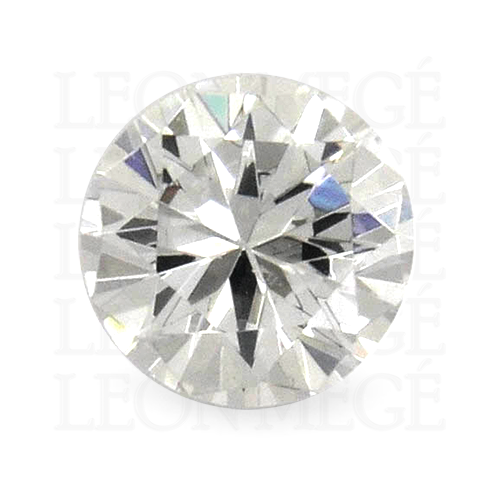
Zircon
Zircon was the most common diamond impersonator. Zircon is relatively hard (7.5 on Mohs scale) and has exceptional fire due to its strong dispersion. Naturally tinted yellow-brown zircons look exactly like low-color Brazilian diamonds common until South African diamonds were discovered. Colorless zircon is known for its brilliance and flashes of multicolored light called fire.
Topaz is durable, has a lot of fire and brilliance, and is inexpensive. It looks equally good as a brilliant cut – such as round, oval, cushion, or step-cut emerald. Topaz comes in various natural colors, such as light gray, baby blue, light brown, taupe, or pale yellow. The colorless topazes are nuked to induce the familiar bright-blue color. The irradiation results in a permanent color and leaves no radioactive residue. A deep pink or red variety called Precious or Imperial topaz is costly.
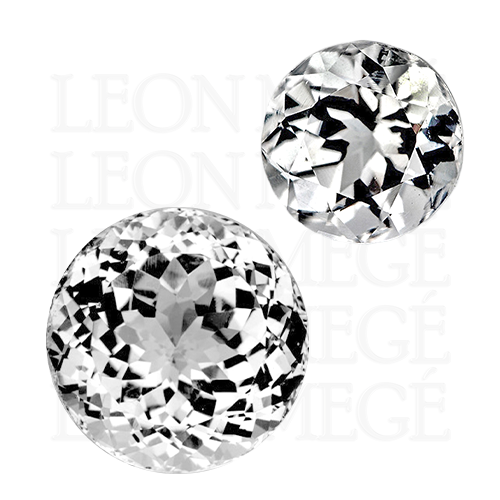
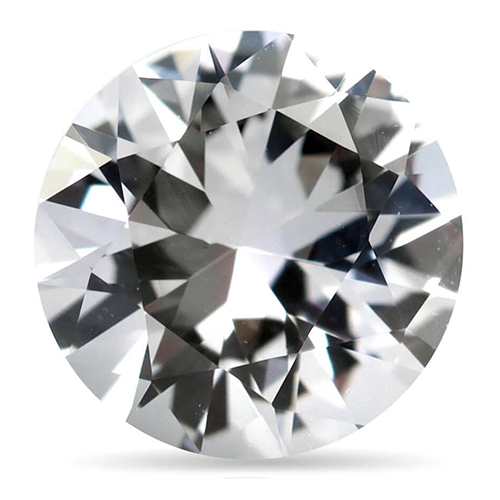
Leucosapphire
Trace elements cause corundum to turn blue, yellow, green, orange, pink, purple, and red we call ruby.
Depending on color saturation and origin, sapphires can be extremely expensive. Most people are familiar with blue sapphires, but they also can be colorless, which is the least expensive variety. Few colorless sapphires are left as-is; they are typically heated to produce a more desirable blue color.
Colorless sapphires have a dull, glassy look because corundum is not good at bending light or breaking it into spectral colors because of low dispersion. A colorless sapphire’s luster is inferior to the pure adamantine luster of a diamond. It appears blurry, washed out, and cannot be confused with a diamond.
Colorless sapphire is a poor choice when compared to other gemstones, either natural or synthetic. Light blue sapphires, on the other hand, are very affordable and attractive stones.
Moissanite
Moissanite is an extremely hard mineral – silicon carbide naturally occurring in meteorites. Moissanite has 9.25 hardness on the Mohs hardness scale – by far the hardest mineral except for a diamond. It has minimal cleavage, so it will not chip easily and is very safe to use and wear. It was named Moissanite after Nobel prize winner Henry Moissan who first identified it as a new mineral. Charles & Colvard produced greenish-yellow material until their patent expired in 2016. Asian manufacturers quickly figured out how to make pure white material and flooded the market with inexpensive moissanite better suitable for jewelry. All of it is produced in China. Because moissanite has strong double refraction (pleochroism), it contrasts with diamond accents.
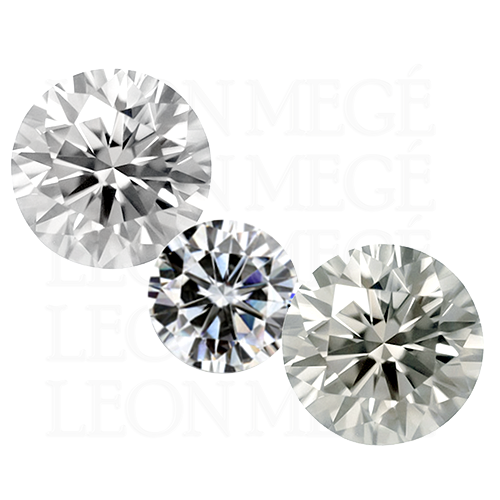
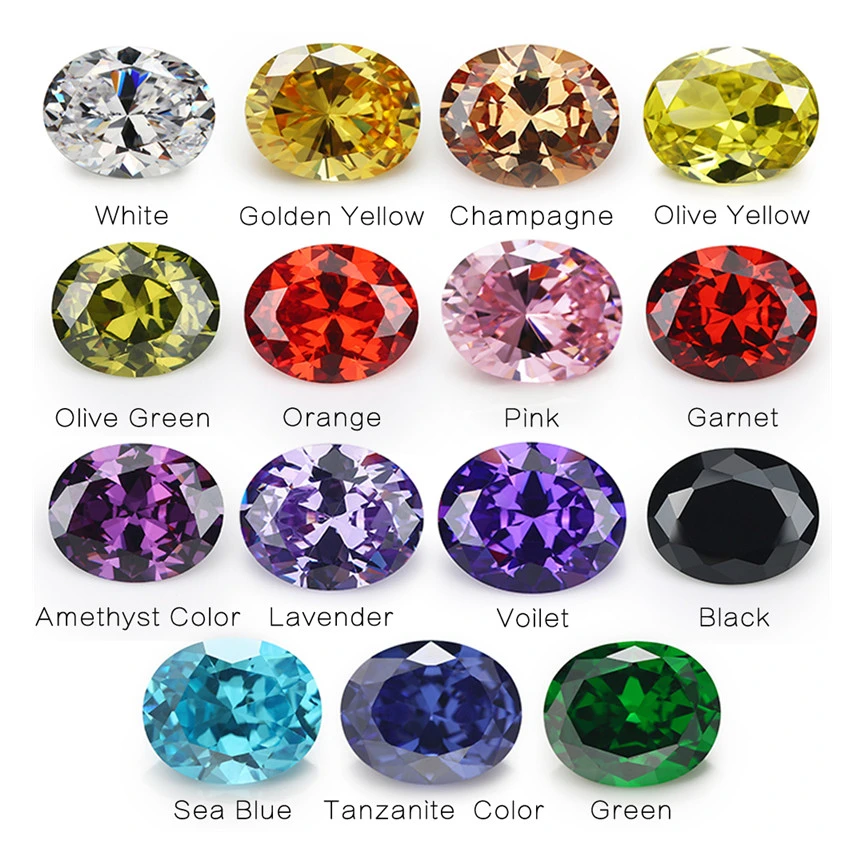
Cubic Zirconia, or CZ, is a hard (8.5 on the Mohs scale), single-refractive mineral. Unlike Moissanite, it does not have pleochroism – the dreaded doubling effect. In 1937 German mineralogists found naturally occurring grains of cubic zirconia, and in the 70s, Soviet scientists working on laser weapon systems accidentally synthesized it. They named the new mineral Fianit an acronym for the Physical Institute of the Russian Academy of Science (FIAN). Asian producers seized the opportunity, and soon cheap generic material flooded the markets. Early production was often contaminated with undissolved flux remnants, causing the stones to turn yellow with time. Modern stones will not become yellow or cloudy.
CZs’ high dispersion is responsible for a significant amount of “fire” – a rainbow-like color separation of the light exiting the stone. Because of it, a CZ has more fire than a diamond. But CZs’ lower refractive index results in a substandard brilliance with less contrast resembling a diamond with a strong fluorescence.
However, since step-cuts have less brilliance and sparkle, an emerald- or an Asscher-cut CZ looks very diamond-like. CZs’ tell-tale brightness that makes it unnaturally white can be masked with a thin layer of tinted coating, similar to the coating on a pair of sunglasses. This coat is not stable and scratches off easily.
CZs go by a multitude of names born of creative marketing. “Diamonique,” used by the QVC shopping network, is an example of such deceptive branding. Others, such as Diamond Nexus Labs, Russian Brilliants, Carat.cc, Sona Diamond, Signity Diamonnique, Lannite, Fianit, Van Graff, Zironite, Amora, and many more are vying for a market share with unsubstantiated claims that their material is different.
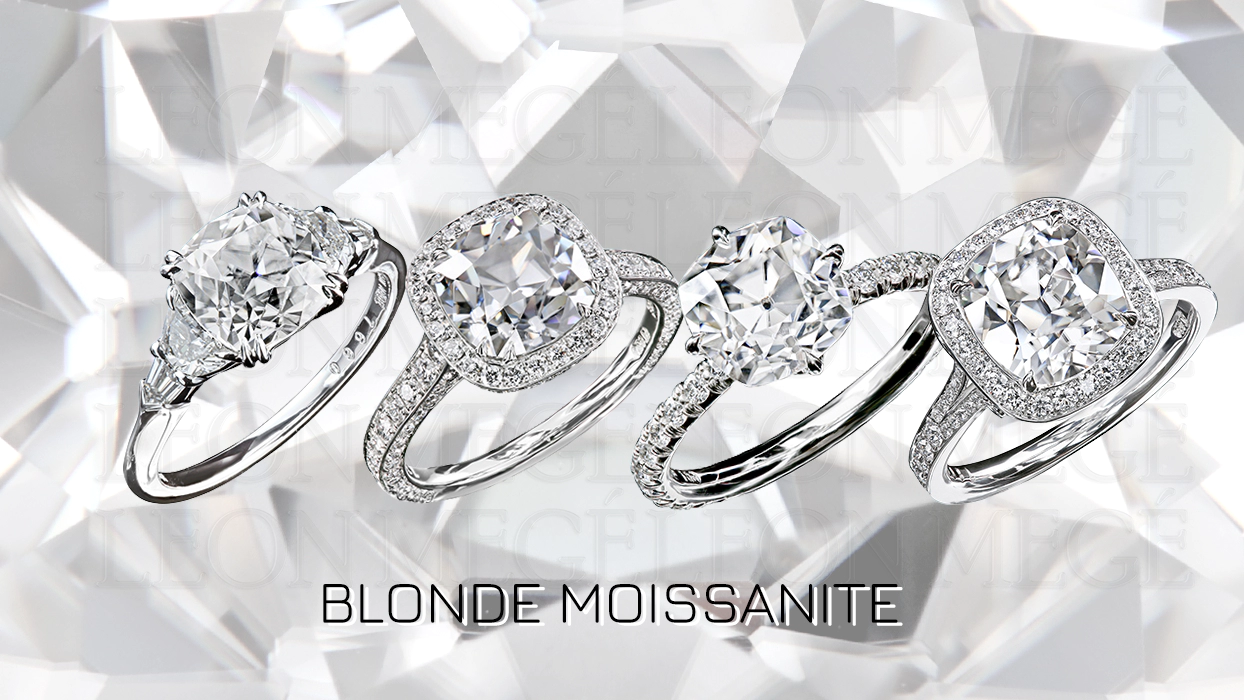
Blonde™ Moissanite is a superior brand of Moissanite sold exclusively by Leon Mege jewelers.
Its unmatched beauty is due to the highly selective proprietary manufacturing process. Leon Mege Blonde™ Moissanite cut usually exceeds GIA (Gemological Institute of America) accepted cutting tolerances set for diamonds.
This high standard ensures that Leon Mege Blonde™ Moissanite is the most desirable brand of Moissanite. We employ the most experienced cutters and polishers to unleash the beauty of our Blonde™ Moissanite. Leon Mege Blonde™ Moissanite is not intended to simulate a diamond but is marketed as a diamond stand-in instead.
You can enjoy this beautiful stone at a fraction of a diamond cost and significantly lower prices than any competing brands such as Charles and Colvard, F&B, NEO, and others. Crystal structure, transparency, brilliance, and visual beauty are the pillars of our proprietary manufacturing process. Leon Mege Blonde™ Moissanite will never chip, crack or discolor; it is extremely durable but still demands the same respect as any other gemstone.
Modern moissanite and, in particular, Leon Mege Blonde moissanite does not have a yellow or green overtone; it is absolutely white. There is no grading system similar to a diamond’s 4C’s for moissanite; they are graded solely by color. Each moissanite vendor claims superior cut and clarity. This is a superficial claim due to the low cost of the rough material. Producing an excellent cut is easy when preserving the weight is not an object.
Leon Mege Blonde Moissanite is superior to other Moissanite brands because our cutters have an overwhelmingly better experience and knowledge. Faceting silicon carbide to look like a natural diamond requires slightly different angles. This is due to the difference in the optical properties of moissanite. Collection-color Blonde moissanite is a rough equivalent of GIA D-E color in diamonds. Production grade is F-G, and Commercial grade is H-I.
True Antique cushion moissanite
Blonde™ Moissanite is available in a wide variety of cuts, but the Leon Mege Trie Antique cut remains the most popular and requested. It has the perfect combination of brightness, fire, and enough sparkle to ignite a forest fire. Because of their proportions, Leon Mege’s antique cushion Blonde™ moissanites are brighter and show more fire than any other cushions. Their light return is outstanding, outperforming any competing brands. Kept clean and well cared for, Blonde™ Moissanite will last a lifetime.
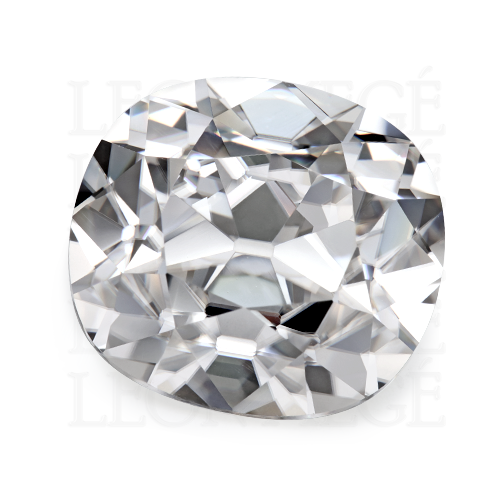
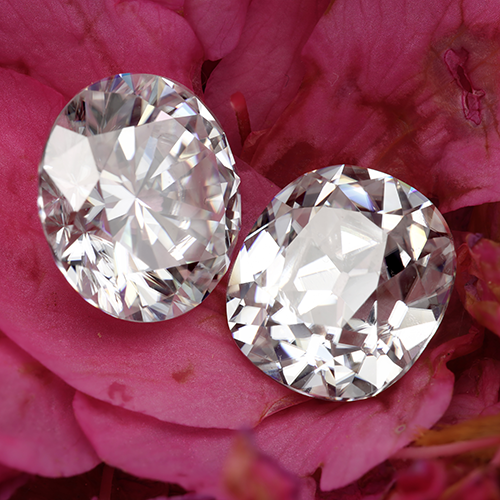
What is Moissanite?
Moissanite is a transparent silicon carbide with an impressive 9.25 hardness on the Mohs scale. It is significantly harder than all other gemstones except diamonds. For comparison, Cubic Zirconia’s (CZ) hardness measures 8-8.5. Moissanite is so durable that you will never have to worry about damaging the stone. It can be scratched only by a diamond.
Blonde Moissanite’s remarkable diamond-like appearance easily fools a casual observer. Even an experienced jeweler sometimes needs a loupe to tell the difference. Moissanite has excellent brilliance and a superior dispersion, or “fire.” In particular, Moissanite looks incredibly natural, very diamond-like as an antique cushion – one of our specialties.
In Living Colors
Blonde™ Moissanite is available in many hues, including:
- Colorless: This is the most popular moissanite color, often used as a substitute for diamonds. It is clear and brilliant, and it has a high refractive index, which means that it bends light very well, producing fiery bliss.
- Near-colorless: This material has a slightly yellow or grayish tint, barely registering with a casual observer. Near-colorless material is favored by those who want to maximize the resemblance to a natural diamond.
- Fancy colors: Blonde™ Moissanite is also produced in a variety of fancy colors, such as pink, blue, green, and yellow. Fancy-colored moissanite is often used in fashion pieces as an affordable substitute for colored gemstones.
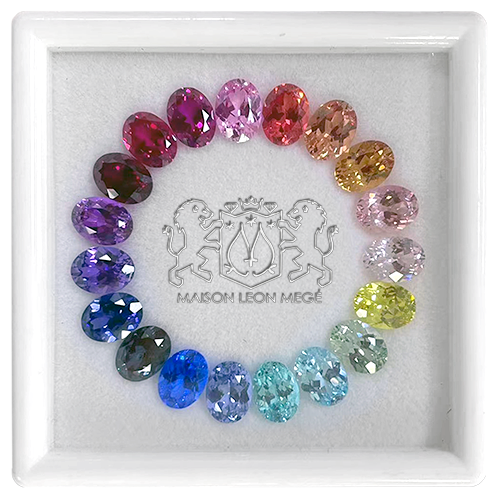
The sizes we can supply are virtually unlimited. Realistically speaking, in larger sizes, double refraction is too noticeable, and it should be avoided.
Despite the claims by its producers, there is no difference between all moissanite brands. All moissanite is produced in China in massive industrial vats and imported in quantities to the US. What makes Blonde™ Moissanite different is the superior cutting skills of our cutters. Any claim of superiority by any brand of moissanite is unfounded.
Moissanite is an inexpensive diamond substitute on its way out, to be replaced by lab-grown diamonds. The same goes for natural diamonds.
The meteoric rise of the synthetic diamond market – which began as a novelty – has become an unprecedented surge that eats at the value and image of natural diamonds. Consumers have happily embraced low-cost, mass-produced lab-grown substitutes for rare, high-value natural diamonds. In less than a decade, lab-grown diamonds have risen from having a marginal market share to accounting for more than 20% of global jewelry sales.
Diamond’s scarcity is a virtue that evaporates the very moment they are plentiful. The glut of nearly worthless lab-grown diamonds has arrived, filling the niche vacated by Moissanite and Cubic Zirconia.

Lab-grown diamonds are identical to those found in nature. Both have the same physical, chemical, and optical properties, distinguishable only by strenuous gemological testing. Lab-grown diamonds offer bargain prices and an unlimited supply, but they lack the rarity and historical significance valued in natural diamonds.
Natural diamonds are mined in the wild around the globe, while lab-grown diamonds are cultivated in factories. In 1954, Howard Tracy Hall, who synthesized the first artificial diamond at the GE lab in Schenectady, NY, was rewarded with a $10 U.S. savings bond for his invention. It took forty years to perfect the process of producing gem-quality, colorless material suitable for jewelry.
We offer CERTIFIED lab-grown diamonds of any size at wholesale prices
We supply certified lab-grown diamonds. A lab-grown option will allow you to afford a much larger diamond. We are trendsetters pioneering the use of lab-grown diamonds in bespoke precision-forged jewelry. The relentless technological progress that brought us Veg-O-Matic and Peeps eyeglass cleaners has brought us the ultimate miracle of frugality.
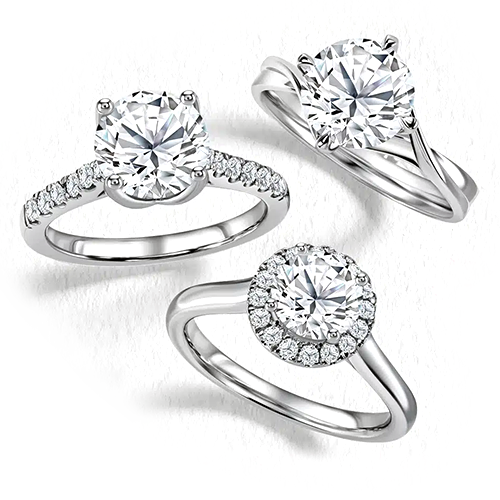

How to tell the difference?
The lab-grown diamonds are authentic; even a veteran gemologist cannot distinguish them from those spat out by volcanoes. Unlike lab-grown rubies and sapphires, synthetic diamonds don’t have noticeable tell-tale inclusions. Just as in-vitro children cannot be distinguished from those born through physical relationships. Only the technologically advanced and costly equipment used by gem labs can separate them.
Are lab-grown diamonds ecologically clean?
The myth of lab-grown diamonds’ “sustainability” or “eco-friendliness” is perpetrated by the producers. Lab-grown diamonds are “green,” which is achieved by painting the machinery with green paint (see illustration). All jokes aside, most factories are located in countries with little regard for the environment. The immense heat and diabolical pressure needed to produce a one-carat diamond are compared to the energy of a volcanic eruption. The energy required to synthesize a diamond can exceed 1,000 kWh per carat, depending on the production method. That does not chime well with false claims about zero carbon footprint. To learn more, watch the 2022 documentary Nothing Lasts Forever.
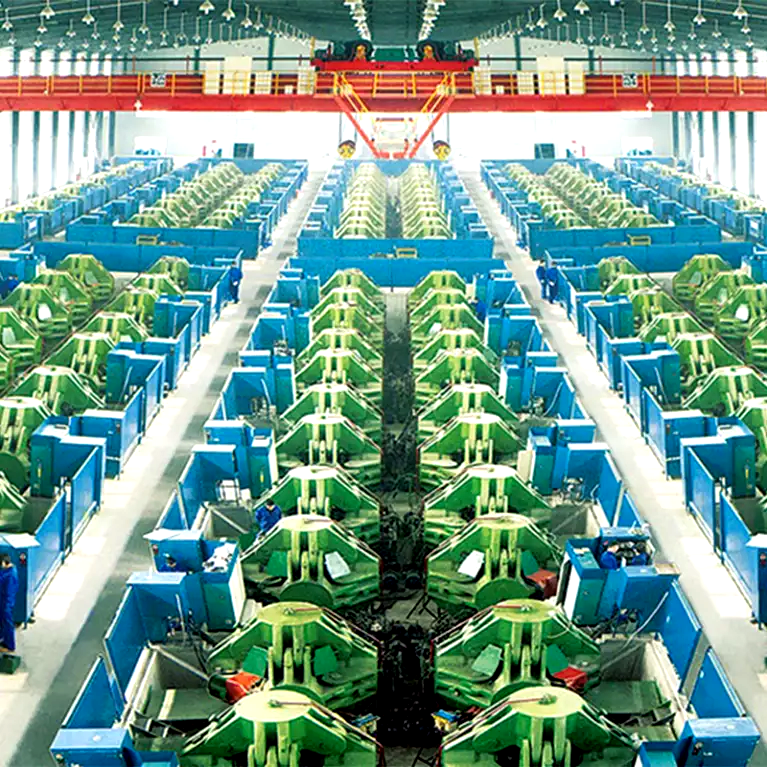

What do lab-growns cost?
Lab-grown diamonds are priced at a small fraction of their natural equivalent. From May 2023 to May 2025, the price of a top-grade, two-carat lab-grown diamond dropped by 50%, while the price of its natural counterpart remained relatively stable, reflecting the scarcity of natural diamonds.
The Gemological Institute of America (GIA) stopped using the color/clarity scale to describe lab-grown diamonds, distinguishing them from natural diamonds using descriptive terms instead. There are only two categories — premium or standard — which are defined by a combination of metrics related to color, clarity, and finish.
Other labs are moving away from grading lab-grown diamonds. In 2025, the Belgian lab HRD Antwerp stopped issuing certificates for loose synthetic diamonds.
Fancy-colored lab-grown diamonds
Lab-grown diamonds are created in a wider range of colors than natural diamonds. This is because the diamond color, determined by the impurities present in its crystal structure, can be controlled during the process, allowing for the creation of a rainbow assortment of lab-grown diamonds.
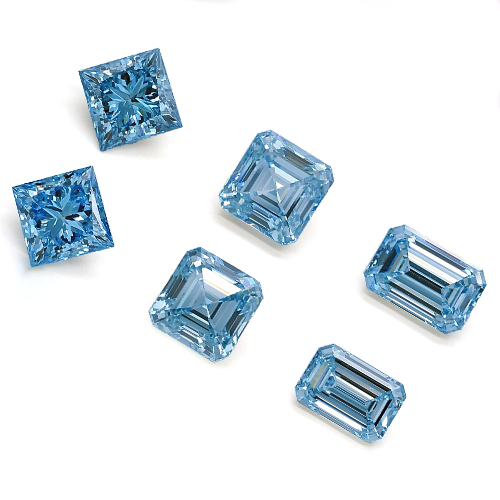

Are lab-grown diamonds romantic?
Would you give the love of your life a bouquet of artificial flowers? That is what a lab-grown diamond is. “Romantic” feelings are a manifestation of attraction and affection in a passionate and often irrational manner. An attempt to save money on a symbol of eternal love, such as a diamond, is hardly a romantic gesture.
How to turn a lock of hair into a diamond
Any organic matter can be turned into a lab-grown diamond. Some couples use their hair to create a diamond.
The hair is turned into a carbon powder using acid solvents and placed into a furnace, where it is heated to extremely high temperatures. This process transforms the carbon into graphite powder, which is then converted into a crystal under a pressure of 200 atmospheres and a temperature of 2,700°F.
Does it harm the environment? You bet it does! But how romantic – out of millions of carbon atoms making up a diamond, a few dozen came from your combined hair? Some ethical questions remain unanswered. For example, should you disclose to your new partner that it was made with your ex’s hair?
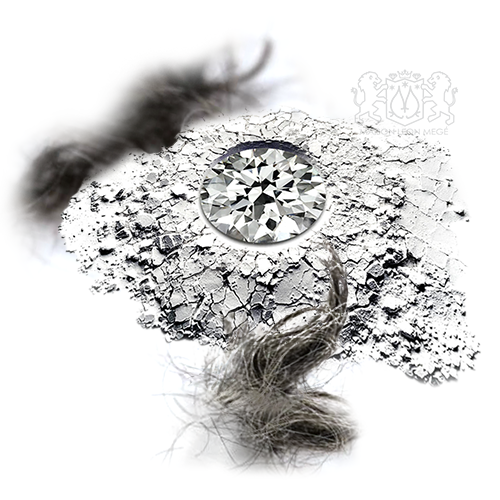
Diamonds from Tequila?
Researchers at Mexico’s University of Nueva Leon near Monterrey found that Tequila, the country’s national drink, produced a diamond film when heated under pressure. Google it if you don’t believe it. We can imagine the rigorous scientific effort by the heroic researchers who probably took many shots of 80% proof Tequila Blanco, which requires a short aging process. The late-night tests confirmed that the drink crystallized into a diamond-like structure. On the other hand, a breakthrough cancer drug created in Mexico from Corona beer turned out to be a hoax.
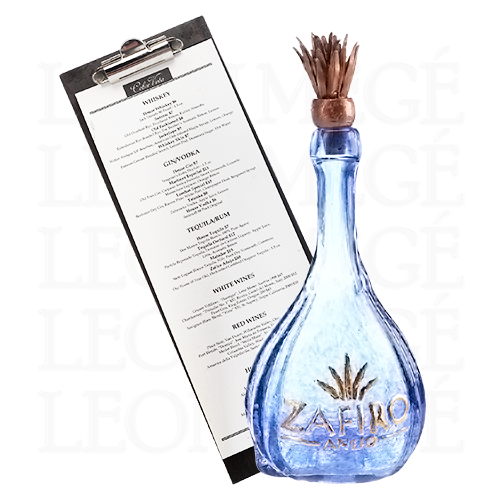
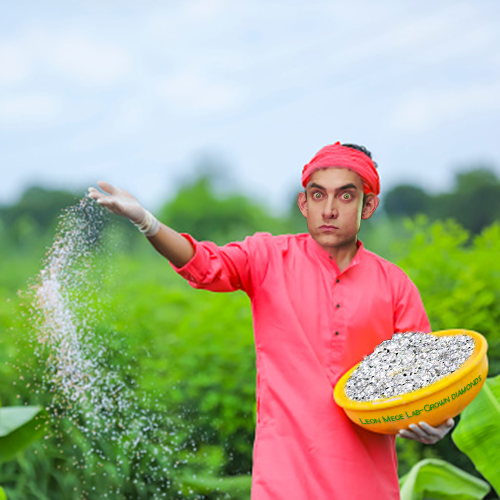
Growing diamonds
Visually and physically, lab-grown diamonds are identical to diamonds extracted from the ground. The crystal growth is induced by immense heat and pressure, similar to natural conditions and processes inside the Earth. Layer by layer, carbon molecules are deposited on a diamond seed, and theoretically, it can grow to any size. For practical purposes, their growth is limited because huge diamonds have no practical purpose. However, in the future, when there are diamond doorknobs, diamond desk lamps, and even diamond windows, the ginormous lab-grown diamonds might become useful again.
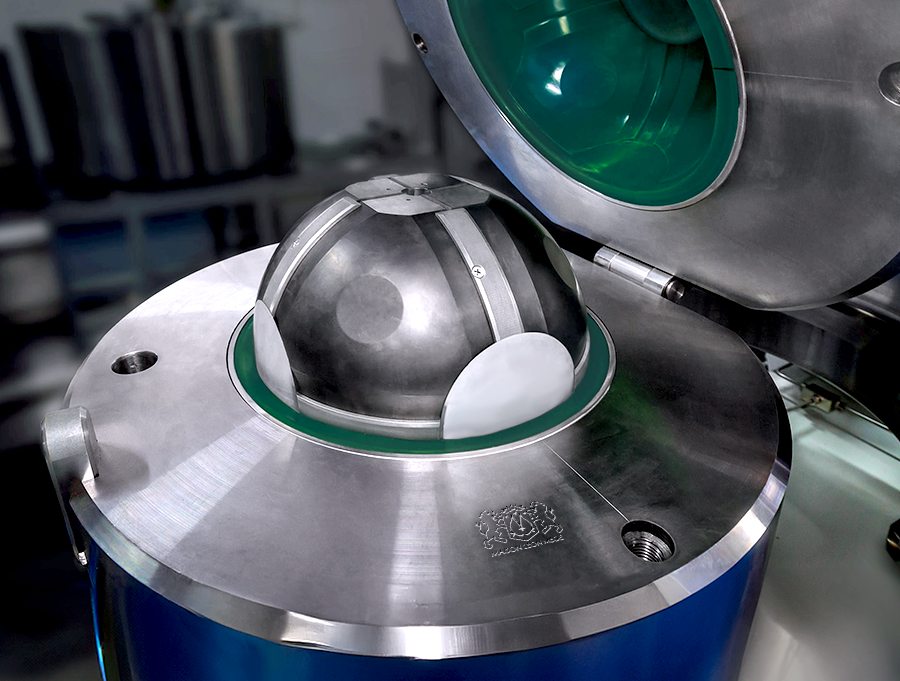
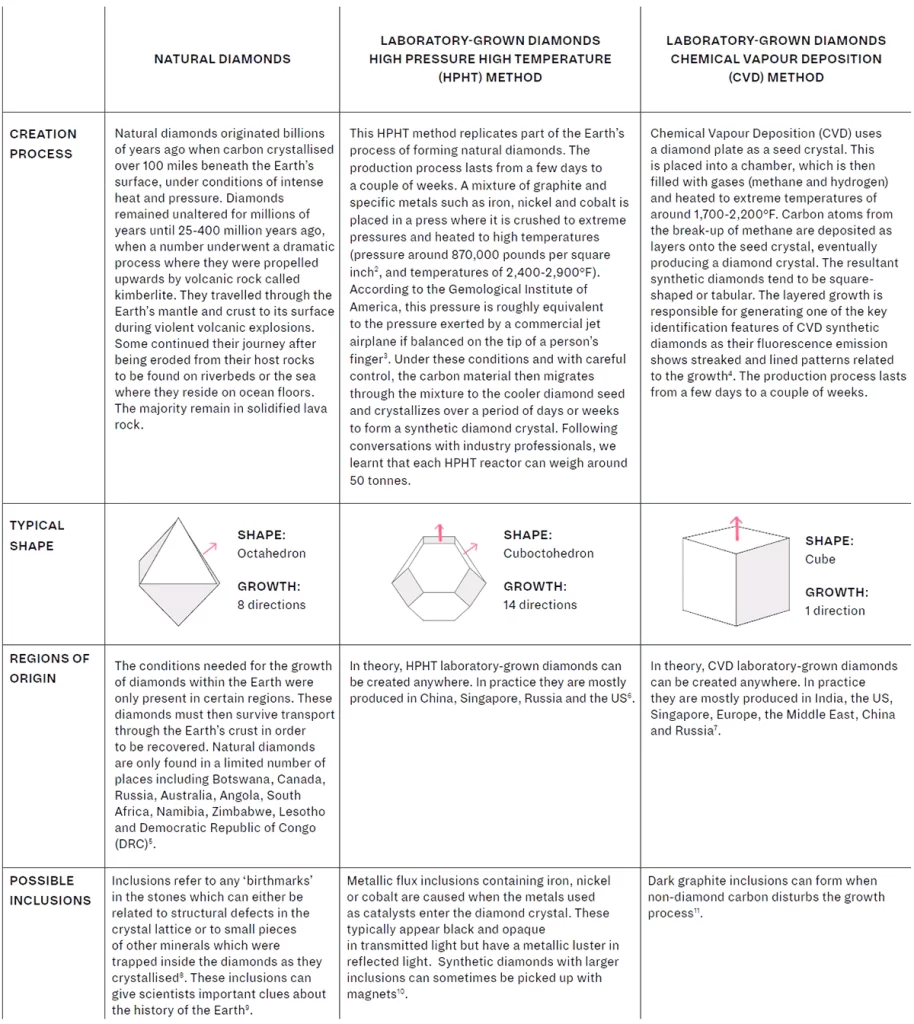
Blue Nuance diamonds
So-called Blue Nuance diamonds are some HPHT-grown diamonds with faint blue tints. Rarely found in nature, the blue tint results from the element Boron impregnating the crystal structure. The HPHT process uses boron as a catalyst and helps clear the nitrogen. Any noticeable tint, whether yellow, green, brown, or blue, can affect the diamond’s appearance and color grade. But unlike brown, gray, or yellow tints not mentioned in the lab report, the blue tint can be commented as “faint blue.” The bluish undertone typically lowers the color grade, which makes Blue Nuance diamonds more affordable. These stones often appear better because blue cancels out the yellow tint in stones below H in color.
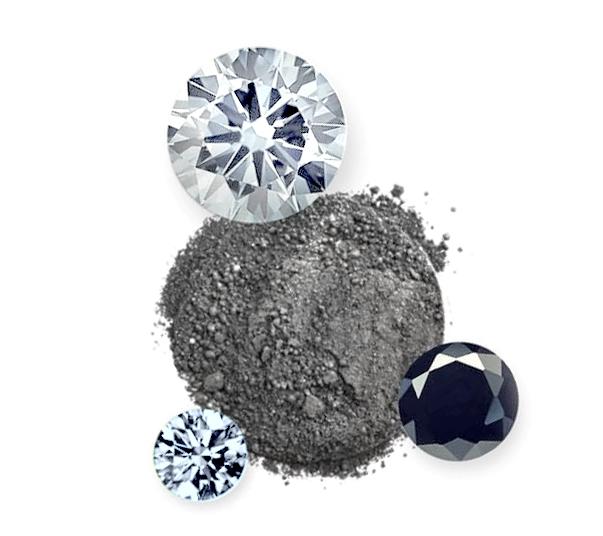
The lab-grown industry despises the term “synthetic.” They insist on the term “lab-grown,” which invokes peaceful green pastures where diamonds are roaming free, fattening up on organically grown graphite. What causes more harm to nature, mining, or synthesizing, is a subject for debate.
Before the 1800s, diamonds were so rare only kings and queens were lucky enough to wear them. But things changed. Despite what the diamond industry says now, the world is not running out of natural diamonds. The price of natural diamonds is kept artificially high by DeBeers. This monopoly has succeeded in controlling the diamond market for over two centuries. DeBeers and Alrosa, the Russian diamond mining monopoly, keep the supply of raw materials scarce and prices artificially high. DeBeers learned that diamonds are forever the hard way because every diamond ever found is still with us.
The Lonsdaleite – a rare hexagonal form of diamond, harder and stronger than the diamond itself is found in meteorites. Supposedly, Lonsdaleite formed out of supercritical fluid at high temperatures and moderate pressures in meteorites. In the process, it preserved the structure of the pre-existing graphite. Later, a diamond partially replaced Lonsdaleite as the environment cooled and the pressure decreased. The finding of Lonsdaleite could revolutionize industrial diamond manufacturing.
HPHT diamonds are more expensive to produce than CVD diamonds. However, there is absolutely no difference as far as the consumer is concerned.
HPHT is an acronym for High-Pressure High-Temperature, which is a process of subjec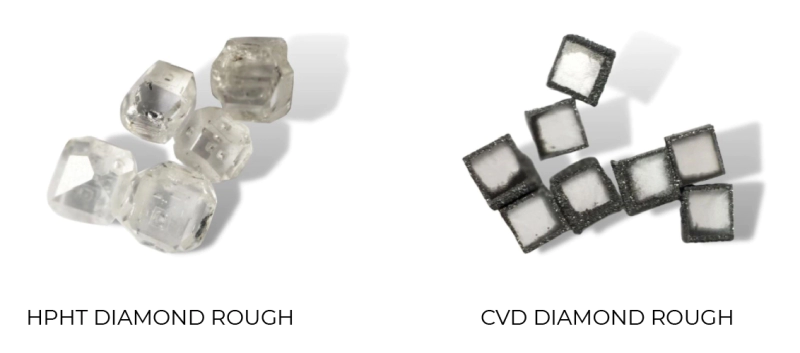 ting carbon fuel to extreme pressure and temperature to turn it into a diamond crystal. CVD stands for Chemical Vapor Deposition, where superheated gas is used to stimulate and grow a small diamond “seed” crystal into a full-sized diamond.
ting carbon fuel to extreme pressure and temperature to turn it into a diamond crystal. CVD stands for Chemical Vapor Deposition, where superheated gas is used to stimulate and grow a small diamond “seed” crystal into a full-sized diamond.
